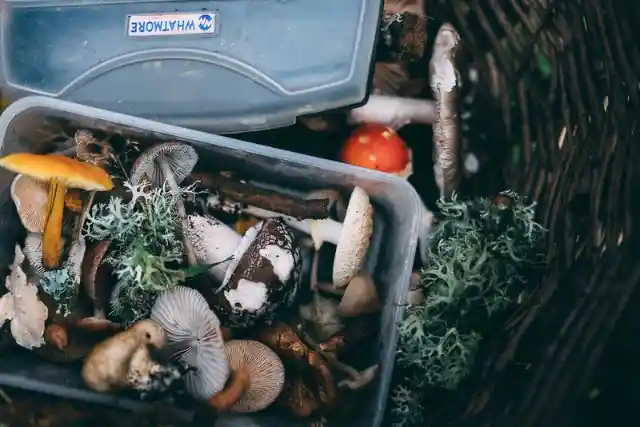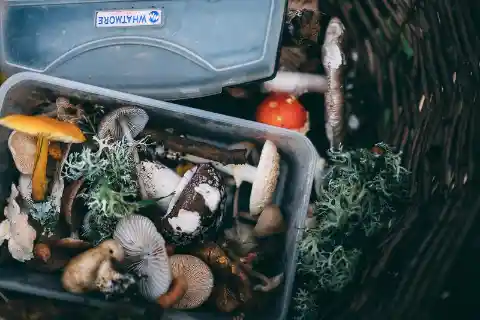Food Foraging: How An Old Practice Of Food Gathering Became Popular And How To Do It Right
By
jagriti /
Oct 13, 2023
Foraging for wild food has gained in popularity recently, becoming a popular hobby for some while becoming a full switch of lifestyle for others. And it has everything to do with growing awareness about eating organic and local. Foraging entails looking for, identifying, and gathering food in the wild, such as plants, fruit, nuts, mushrooms, and other edibles. It all comes down to understanding more about our environment.
Origin of foraging
Prior to the development of farming and agriculture as a more reliable source of food, hunter-gatherers who practiced foraging were responsible for keeping their communities alive by killing animals and collecting plants from their local surroundings. Foraging has been critical during challenging times marked by poverty and hunger. Before things changed and we began to rely more on markets for our supplies, every household used to supplement their supply with food and medicinal plants collected from the wild. The term "foraging" no longer refers solely to rural areas, but also to parks, verges, and roadside areas in major cities. Additionally, wildlife tourism has drawn more people to foraging as a leisure activity, giving us the chance to take a break from our hectic lives and uncover novel ingredients with amazing flavors to improve our meals. What foods can you forage for?
Foragers frequently look for a variety of wild edibles. Here are a few of the foods that foragers most frequently look for. Mushrooms:
The most sought-after food item among foragers is mushrooms. Hen-of-the-woods, commonly known as maitake (Grifola frondosa), and oyster mushrooms are just two of the many nutritious and safe wild mushrooms (Pleurotus ostreatus). Greens:
Greens that are edible are widely available in the wild and might even grow in your backyard. The wild greens that some people mistakenly regard as weeds are actually edible and can be used to make delectable recipes. You can eat wild greens such as wild lettuce, mallow, dandelion greens, sweet fennel, plantain, purslane, lamb's quarters, and chickweed. Fruits and berries:
Among the berries that grow naturally are blackberries, raspberries, blueberries, cloudberries, cranberries, bilberries, currants, lingonberries, bearberries, and crowberries. Other food that can be foraged:
Depending on where you live, you can forage for things like roots, nuts, seeds, and even shellfish. A great source of numerous nutrients, shellfish like clams and mussels can be found in some coastal areas. Additionally, a lot of foragers gather dandelion, burdock, and chicory roots in addition to wild onions. Some foragers also like gathering nuts and seeds, such as pine nuts, walnuts, pecans, and acorns. Tips for beginners
1. Team up with a knowledgeable forager who can instruct you on the local wild foods and deadly replicas that are present. 2. Before going on your first adventure, learn how to identify wild edibles by consulting a beginner's manual. 3. It is your obligation to research whether foraging is allowed where you plan to travel. Private property should never be entered without authorization. 4. If you're foraging in untamed areas, you must pack the appropriate clothing, footwear, food, and drink. 5. Always show consideration for fellow foragers and the environment you're in. Respect wildlife, be considerate, and when necessary, stay on the trail. 6. Keep in mind to leave some supplies for nearby wildlife when you are foraging. You should only take what you need since animals frequently rely on wild edibles like berries. 7. Steer clear of collecting rare and protected wild edibles. While certain plants may be common across their whole ranges, they may be plentiful locally. 8. Never go foraging for edible wild plants close to a busy road. Most plants take up heavy metals like lead and other toxins from pollution. And even when there is no longer any traffic, these pollutants have a tendency to lodge in the soil. Also, stay away from locations that have or are now being pesticide-sprayed. 9. Just forage plants that seem to be in good shape. Plants can become ill from pests, fungi, disease, or pollution. Harvesting healthy plants lower your risk of getting sick and increases the nutritional value of your food. Characteristics of Poisonous Plants
Even without a field guide, it is possible to identify harmful plants thanks to their numerous distinctive traits. Here are some qualities Waxy leaves: Also referred to as the cuticle, "wax" on leaves is a protective covering that helps plants retain water. However, it can occasionally be a sign that a certain variety of greenery is a dangerous plant and should not be consumed. Mushrooms: Some fungi, such as morel, oyster, or chanterelle mushrooms, may be edible, but you should use caution if you find them growing on trees or on the ground. Any mushrooms that you cannot positively identify should not be consumed since they may be harmful. Milky sap: If a plant's branches or stems are split or broken, a material called milky or latex sap pours out. It may result in skin rashes or other severe allergic responses. Spines and fine hairs: Spines and fine hairs are typically signs that a plant has a defense mechanism to fend off predators. When touched with naked skin, the majority of these hairs will burn or sting in some way.

